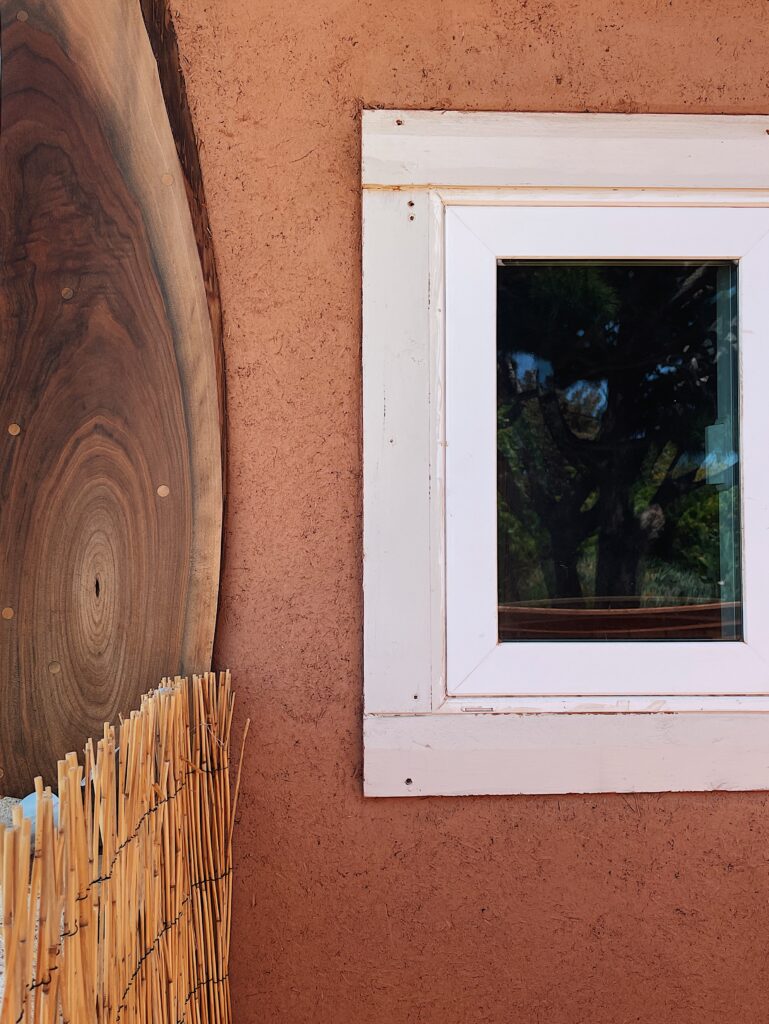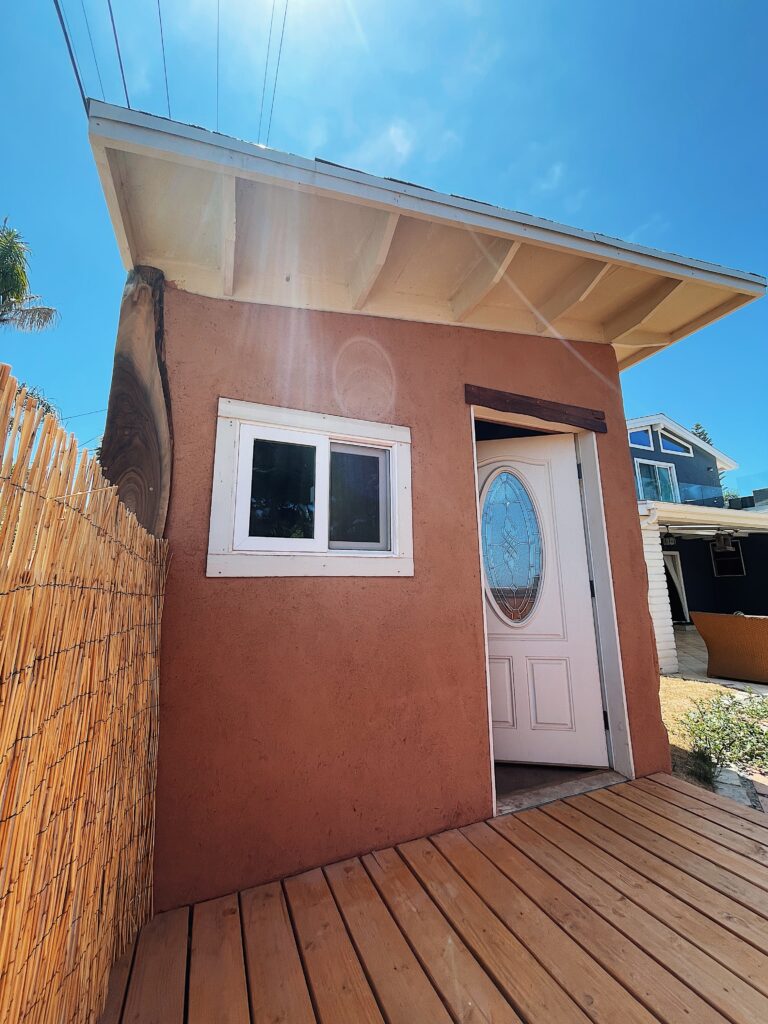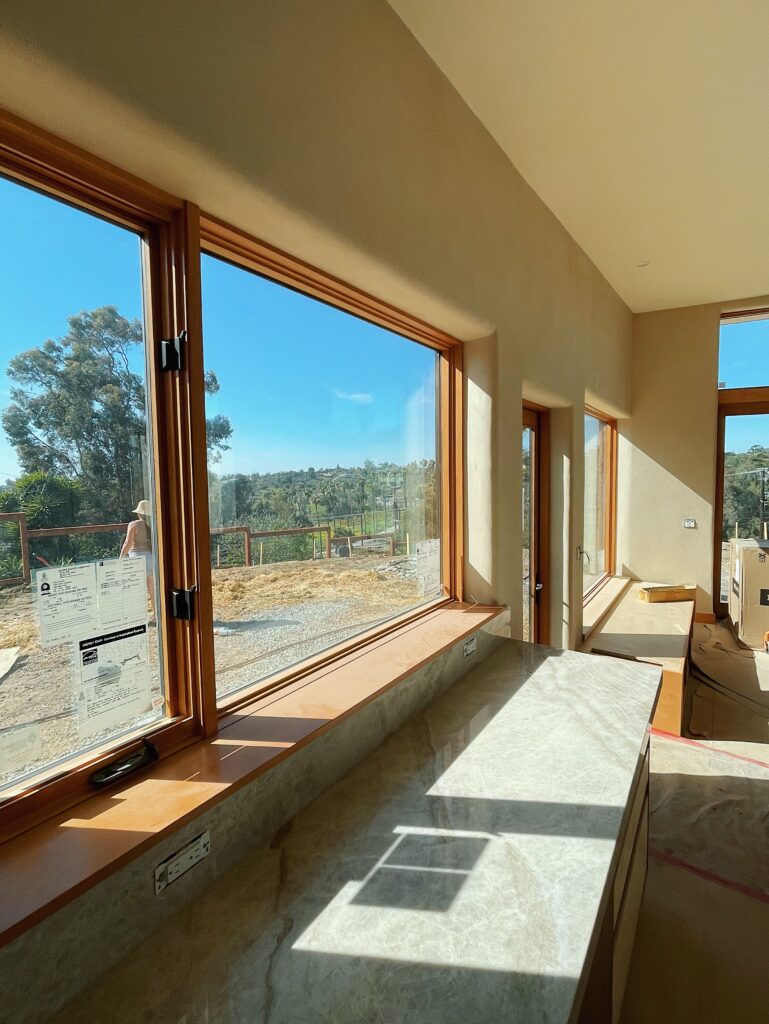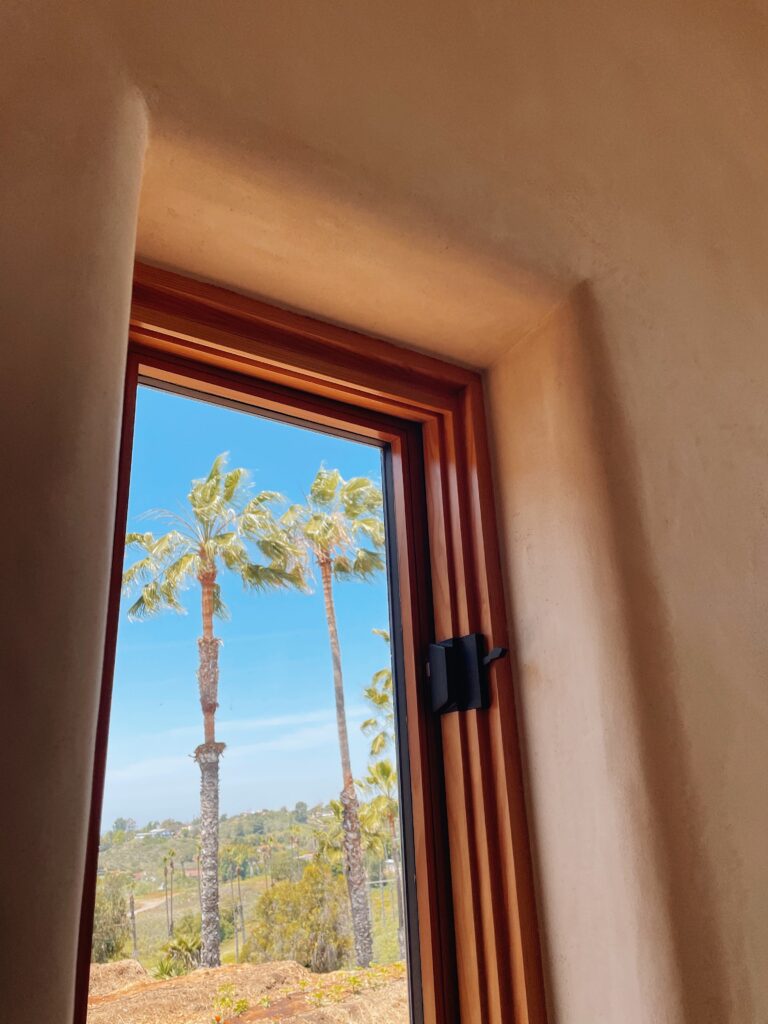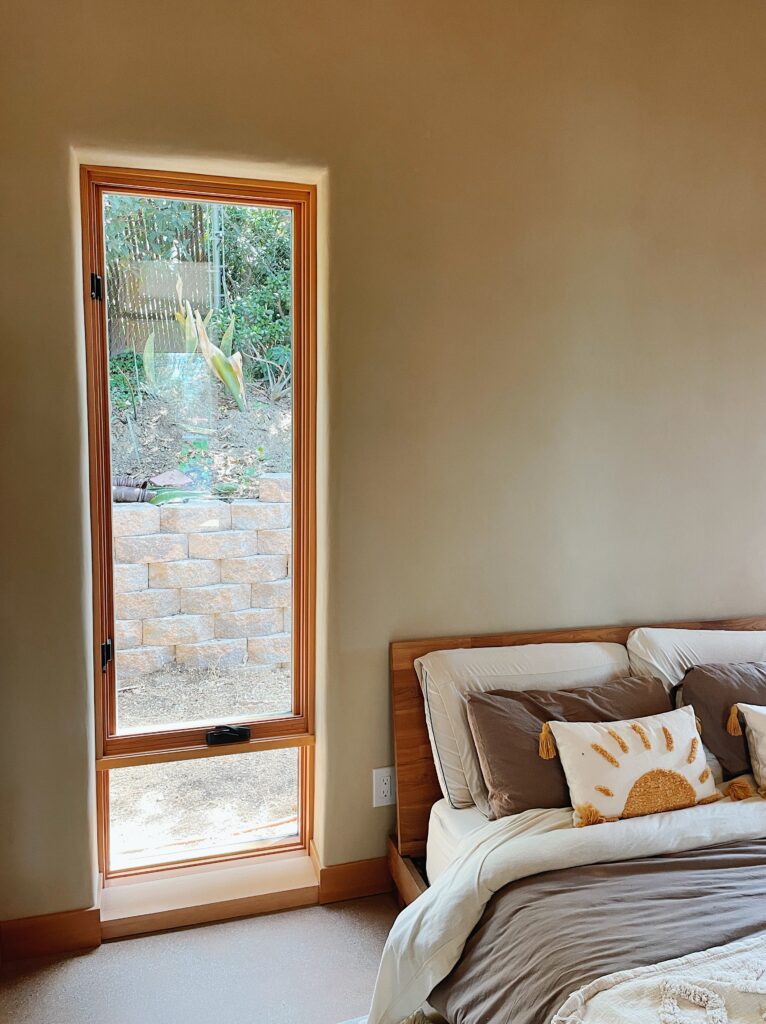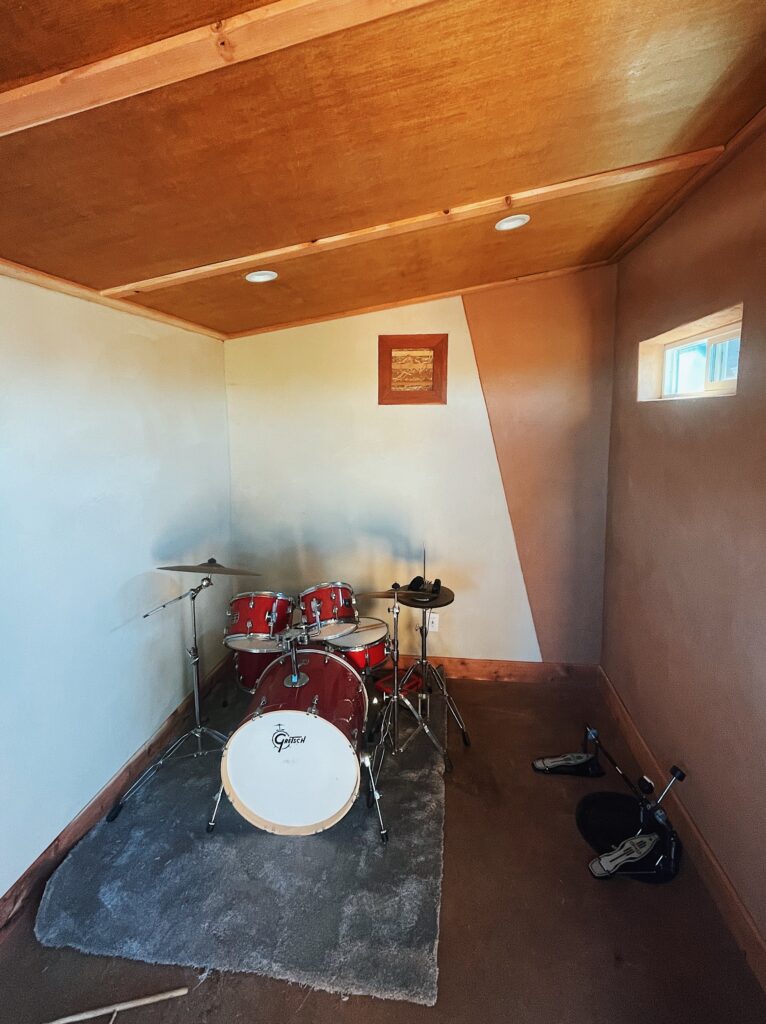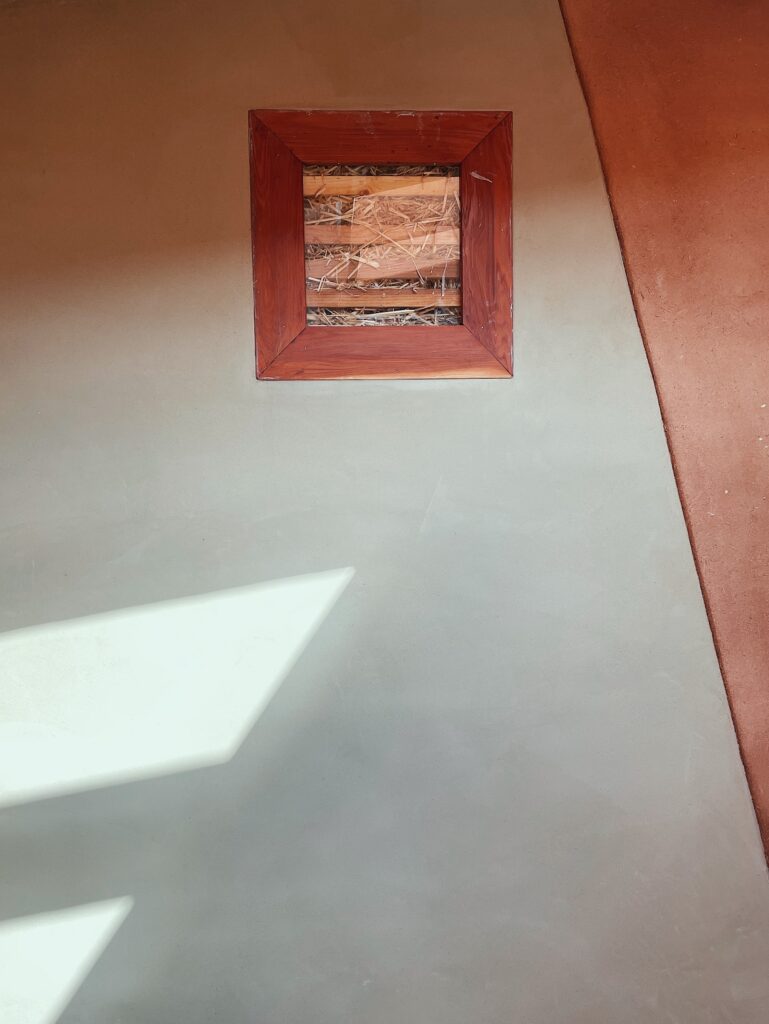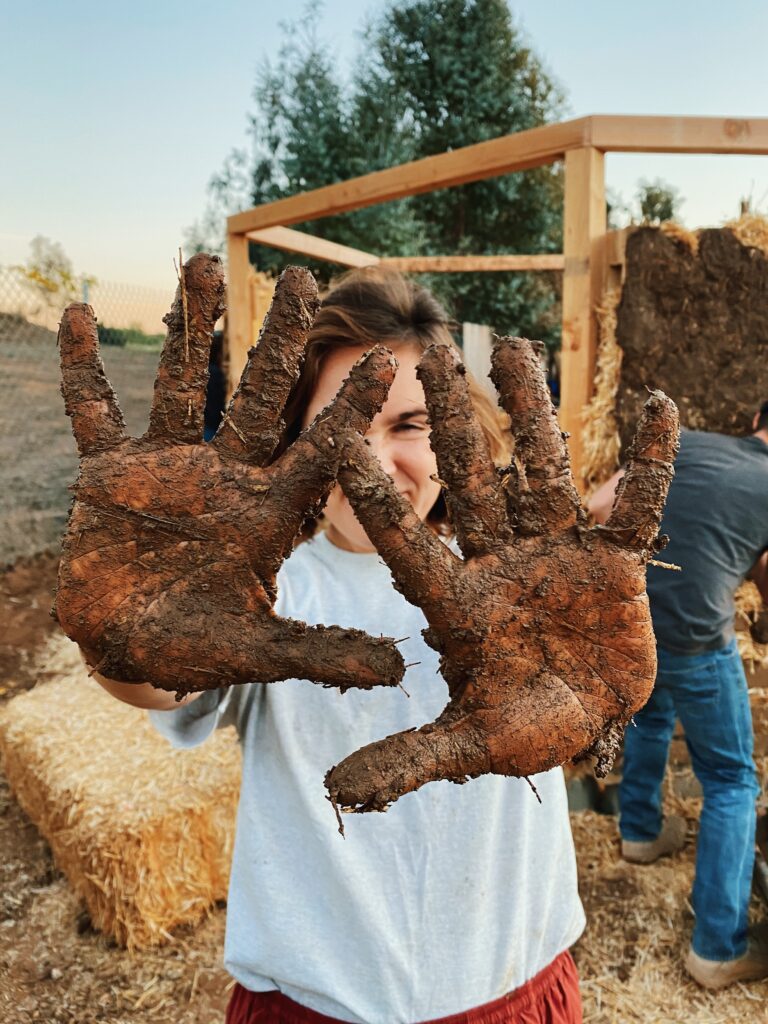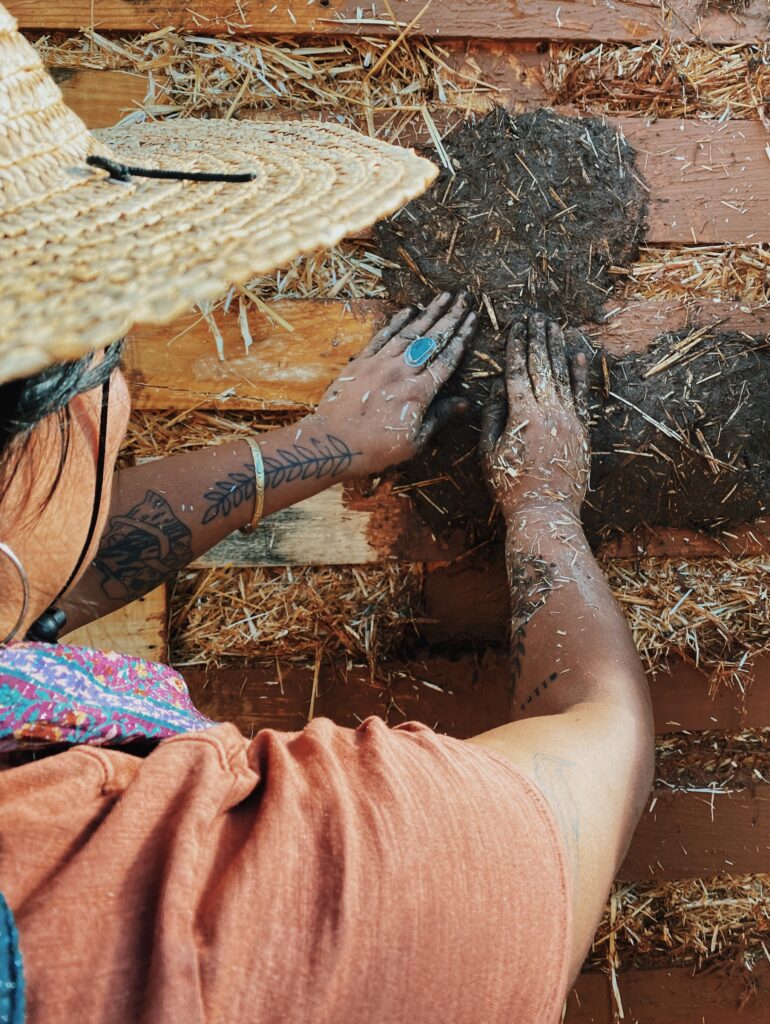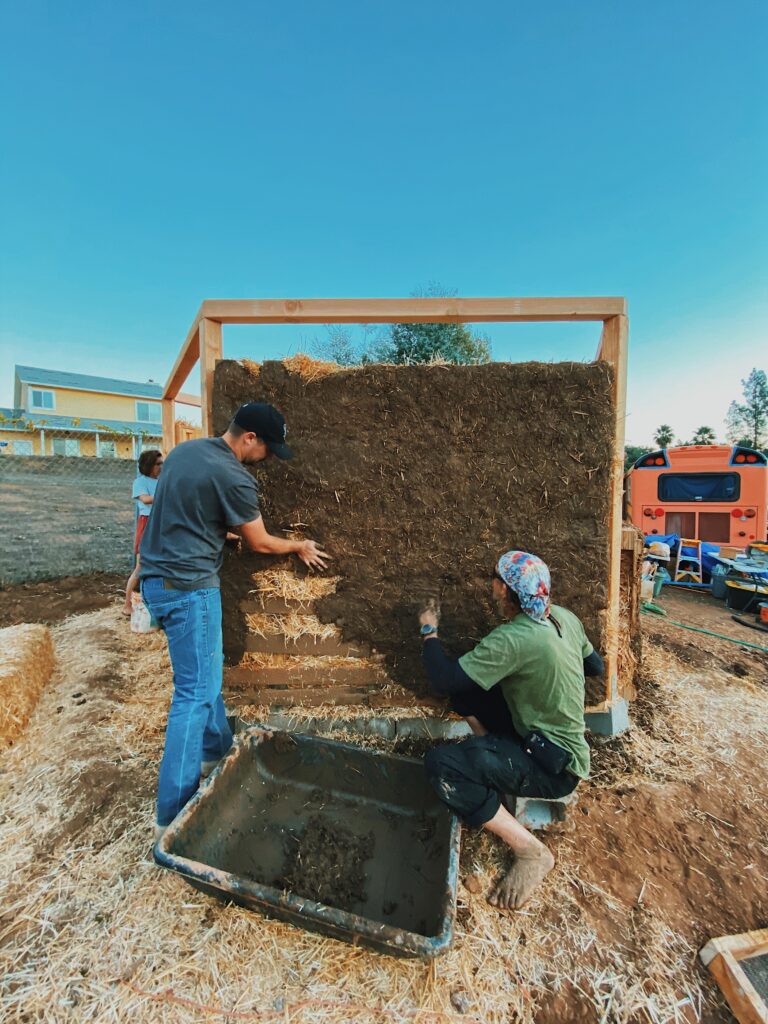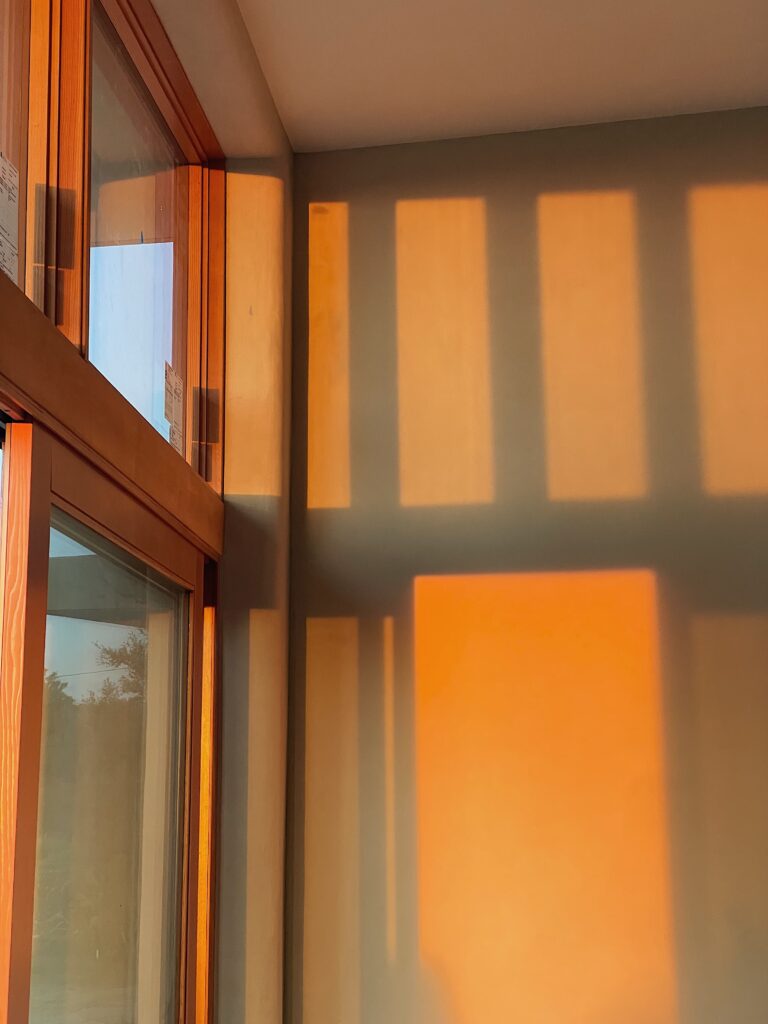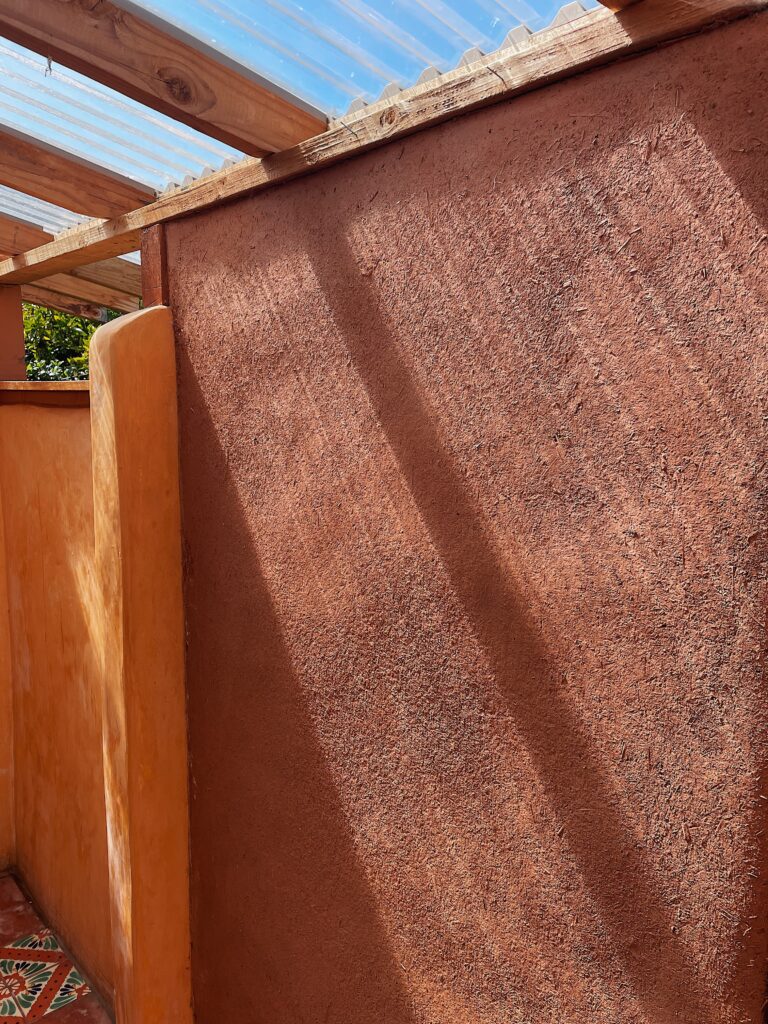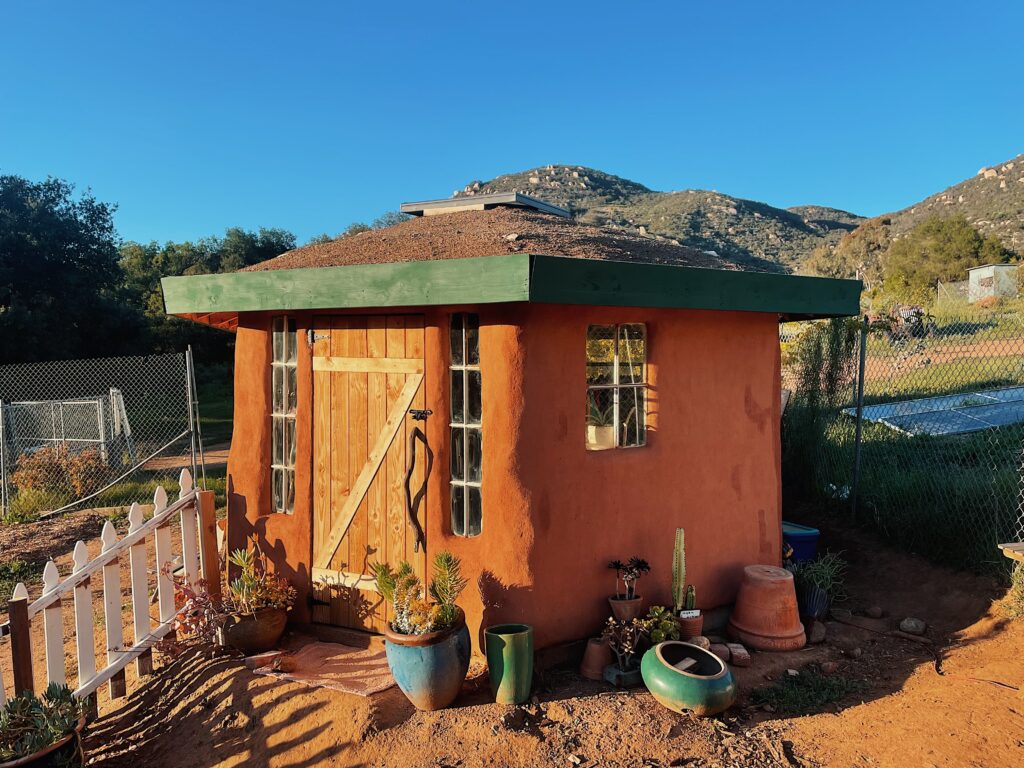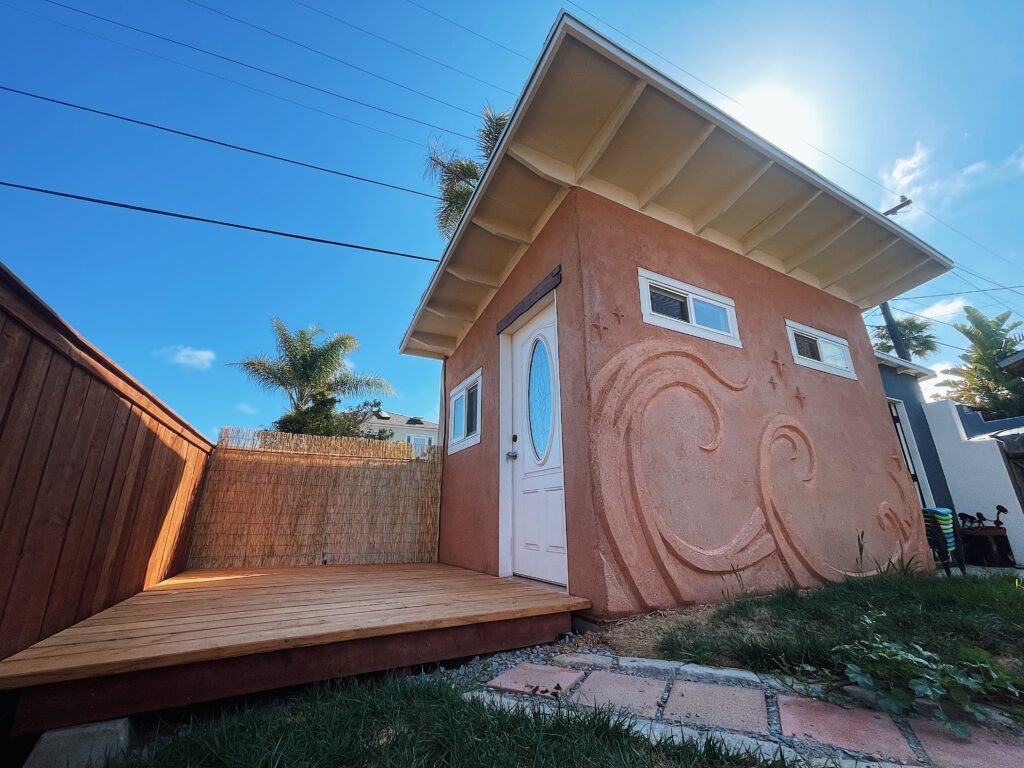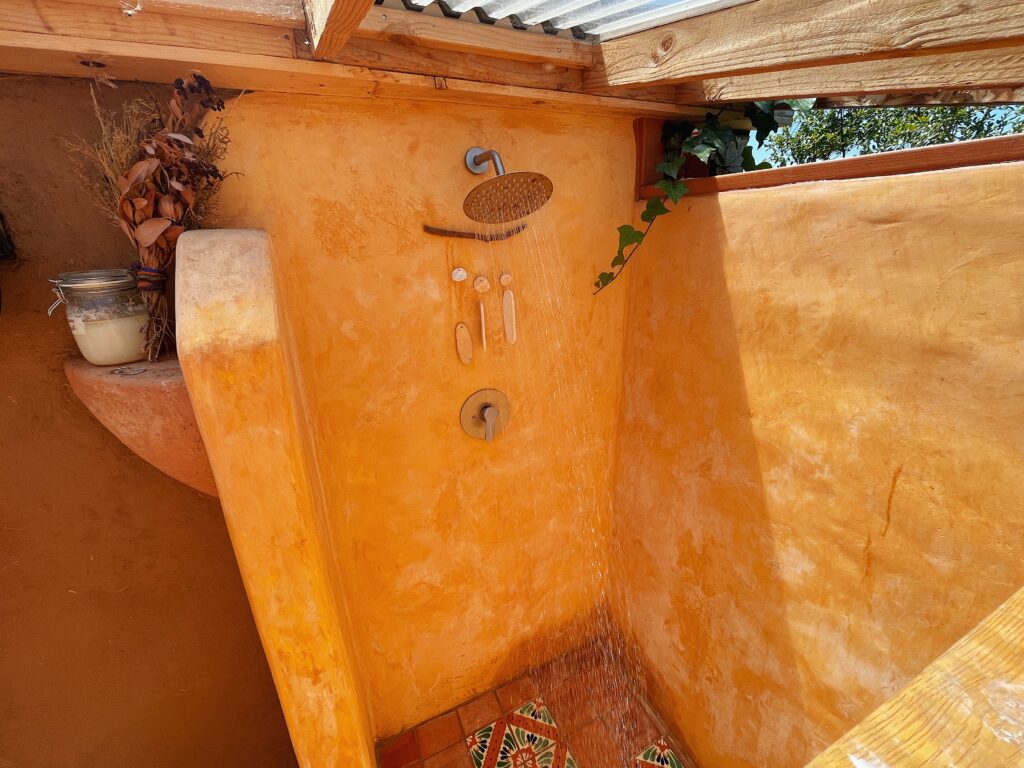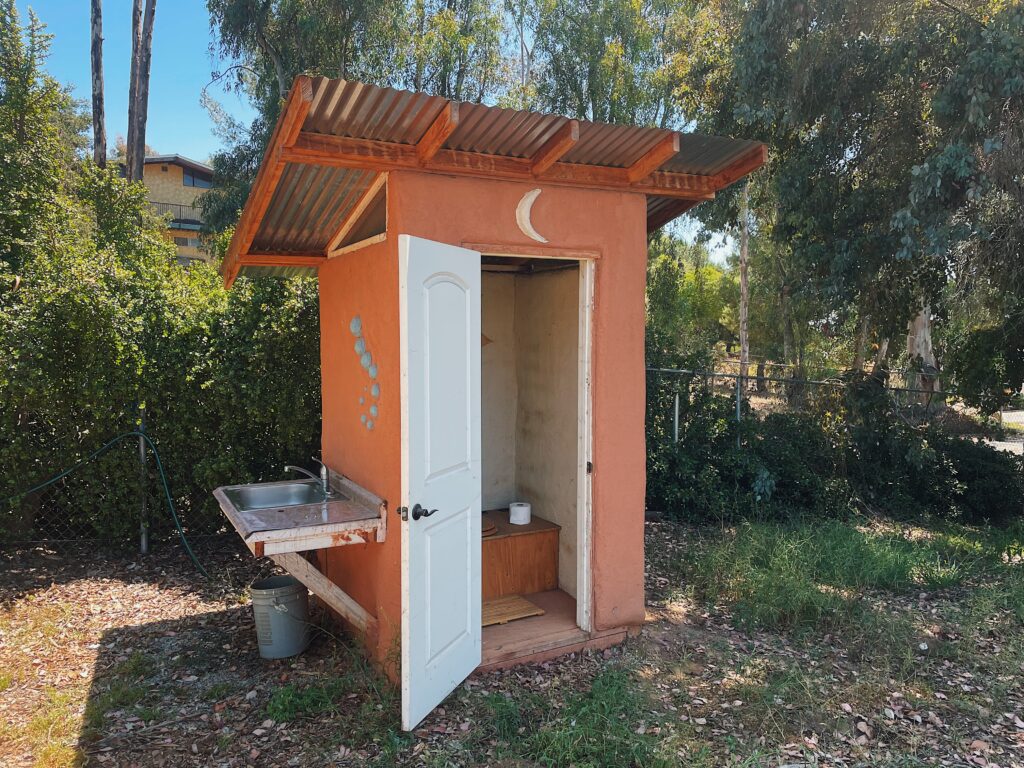Clay Plaster
Clay plasters have numerous benefits and can be applied over virtually any substrate ~ from traditional earthen walls to conventional painted drywall.
Benefits of Clay Plaster
- Temperature Regulation
Thick clay plaster offers substantial thermal mass, meaning it will slowly absorb heat and release it when temperatures drop, reducing energy bills in both cold and warm seasons. [Source]
- Moisture & Humidity Control
Clay plaster requires no vapor barrier, meaning that moisture and condensation will not become trapped in the walls and lead to mold issues. Additionally, clay will naturally absorb moisture in the air and regulate humidity levels inside the home. [Source]
- Improved Indoor Air Quality
Clay walls “breathe” with zero VOC off-gassing, and lab tests show clay plaster can passively remove pollutants as air passes through. [Source]
- Acoustic Insulation
Thick clay plaster with a dense, textured surface diffuses and absorbs sound waves, softening echoes and ambient noise for a calmer space. [Source]
- Natural Beauty
There is simply nothing quite like the aesthetic of artisan natural plasters! Clay resonates deeply in the human psyche, and hand-troweled textures create warm, soulful, and unique walls that are not possible with drywall and flat paint. [Source]
- Fire Resistance
Clay plaster is inherently fireproof and non-combustible (Class A1), offering built-in passive fire protection to any wall assembly. [Source]
- Low Carbon Footprint
Natural materials like clay, sand, and straw have vastly lower embodied carbon than gypsum and paint finishes, making clay plaster a much more earth-friendly wall finish than conventional materials. [Source]
- Durability & Repairability
When properly applied, clay plaster can last for decades. Minor dings can be spot-repaired with the original mix—no full replastering required. [Source]
- Safe & Non-Toxic
Pure clay plaster contains no synthetic additives or solvents, emits zero VOCs, and can even trap odors and common indoor chemicals in its pores. Healthy for humans, healthy for the earth! [Source]

